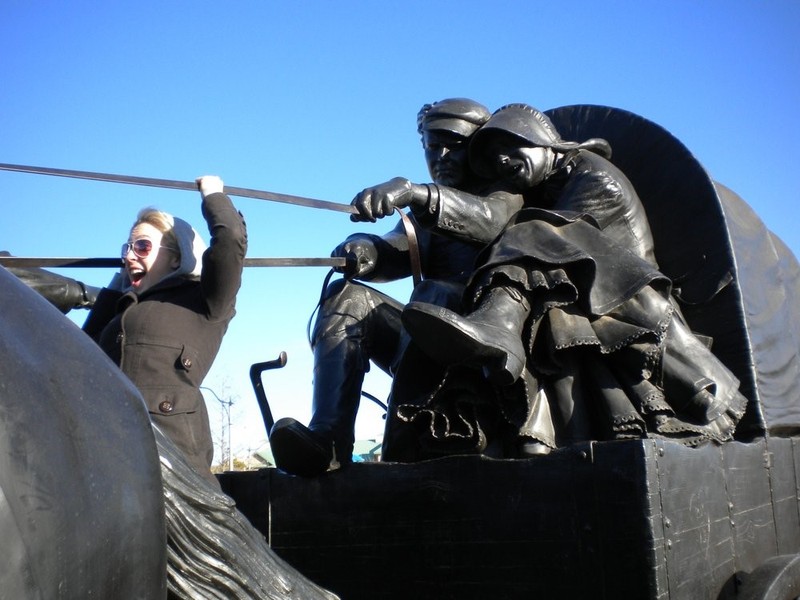Centennial Land Run Monument
Introduction
Text-to-speech Audio
Images
The lead buckboard of the monument.

Woman interacting with the sculpture.

Statue of dog struggling to join the race.

Backstory and Context
Text-to-speech Audio
Located along the Bricktown Canal River Walk, the monument includes bronze sculptures of 24 horses and riders, two covered wagons, a buckboard, a sulky, dogs, and even a startled rabbit. All the statues are quite lifelike and they stretch for 365 feet along the river walk, making the entire monument one of the largest free-standing bronze sculptures on the globe.
A bronze soldier, standing off to the side, is depicted firing the canon which set the frontiersmen on their journey to stake their claim on a plot of land back in 1889. Other statues include a bronze rider reaching back for his hat, a pair of horses, pulling a buckboard, rearing up in fear just before entering the water, and a dog struggling to leap from the back of a covered wagon to join the race.
The monument was designed and created by native Oklahoman artist, Paul Moore, and is accessible 24 hours a day. However, daylight visits are highly recommended.
Sources
Hoig, Stan. "Land Run of 1889." The Encyclopedia of Oklahoma History and Culture. Accessed March 01, 2018. http://www.okhistory.org/publications/enc/entry.php?entry=la014.
